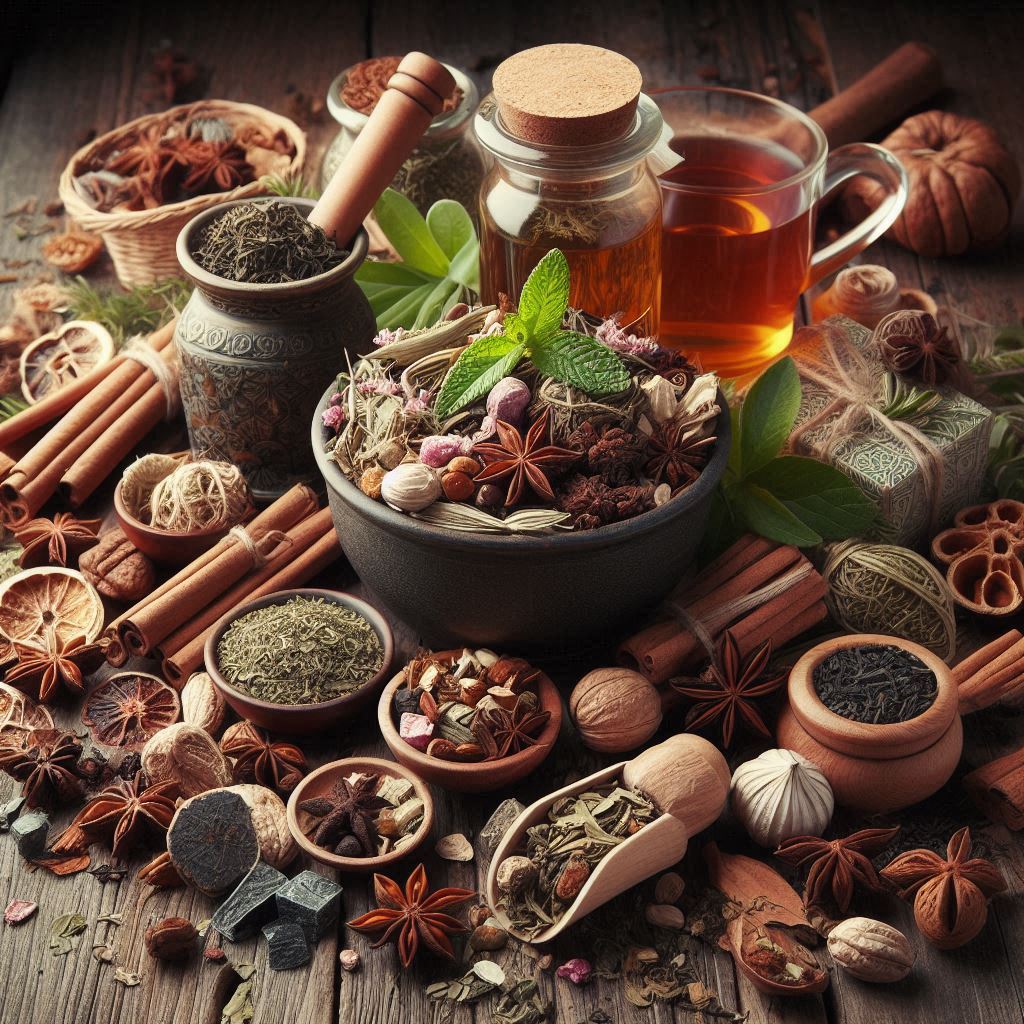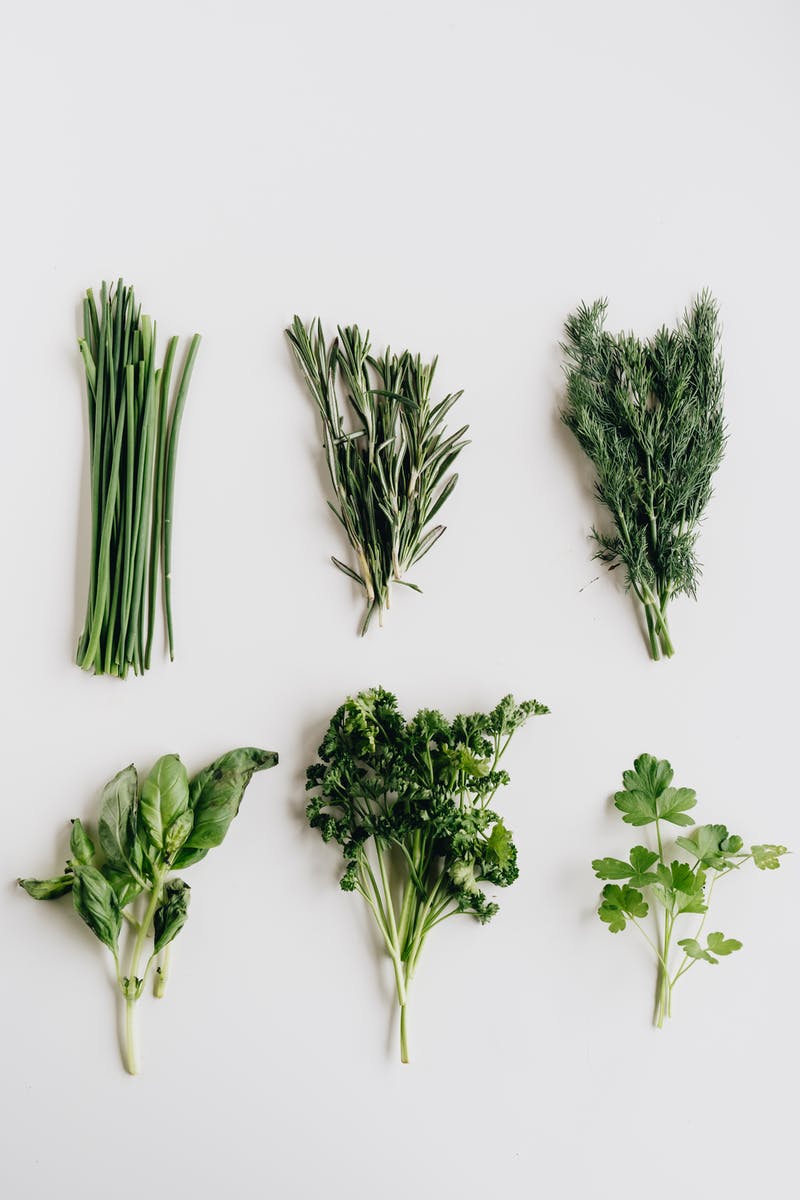In the vast spectrum of Ayurveda, the use of teas is a gentle invitation to health, a key to opening the door to the knowledge of longevity and strength. These are not just drinks; it is a liquid Ayurveda: every sip is a journey towards the attainment of young, glowing skin. But what is this herbal tea, and how does it become the means to wisdom that has withstood the passage of time?
As we move deeper into the practice of Ayurveda, we discover a range of teas that tell a tale of their own. All their herbs are chosen for taste and for their capacity to balance the three bodily humors, or doshas. We should then spread out the scroll of knowledge and look at these teas closely, understanding the herbs that go into them, and how they play their part in the journey to anti-aging and vitality.
Essiac Tea: A Blend of Legend
Renée Caisse, a nurse, found a special formula in a Canadian forest from an Ojibwa healer. With the scent of pine trees and wild herbs around her and the paper with the recipe in her hands, she had a slight tremor of her fingers, which had served her for years taking care of the sick.
Renée, with the kind eyes, had been a silent defender of her patients against their diseases. The list of botanicals in front of her was supposed to bring youth and knowledge of the ages, and it was a turning point in her recovery.
The formula for the Esiac tea, a name given to it with her surname in reverse, was said to be the harbinger of energy. The Ojibwa considered this combination of herbs, as a means of fine-tuning the body’s natural healing system.
Essiac tea is a blend of different herbs, including:
Burdock root
Slippery elm
Sheep sorrel
Indian rhubarb
Apart from its cancer-fighting potential, Essiac tea is also thought to have properties that help the body cleanse, strengthen the immune system, and fight inflammation. It is mostly sold as powder, although it also comes in capsules and teabags.
This product is prepared by mixing liquid tea concentrate with an equal measure of heated spring water that has been boiled.
Dosage: The manufacturer’s recommendation is to take 1 to 12 ounces (30 to 360 mL) per day for the best effect.
With the last light of the day painting the sky orange, and then lavender, Renée thought about the possibilities of these herbs steeped in Ayurveda. Could they capture the essence of youth?
Burdock root for blood cleansing, sheep sorrel with high antioxidant properties, slippery elm for inflammation, and Indian rhubarb for digestion—all chosen deliberately.
To fit this powerful combination into today’s lifestyle, it is required to brew the tea correctly. Begin by mixing the dried herbs: Burdock root 6 ½ cups, sheep sorrel 16 ounces powdered, slippery elm bark – 1 pound powdered, and Indian rhubarb root 4 ounces powdered.
Bring one gallon of water to a boil in a large pot. Put in one cup of the herb mixture and stir. The steam stimulates the kitchen with a holy fragrance. Let it cook on low heat with the lid on for about 10–12 hours to draw all the flavors of the herbs.
Then let it sit again for another twelve hours with the lid on, giving more chance for the tea to express itself. Then, to strain the mixture, warm it up a little. Use sterilized jars or containers to pass the mixture through a fine mesh strainer. Essiac tea, fit for use, can be taken before food, half an hour before, to give the body and the spirit a new life.
In “The Essence of Essiac: In “A Journey to Well-being,” readers learn about the taste and smell of Essiac tea and hear about the protagonist’s quest to heal herself. This book presents the effects of the tea component and includes the immune boosters, detoxification, and anti-aging effects. This way it combines the teachings and suggestions, inviting the reader to take this tea regularly.
Ashwagandha Tea: The Vitality Enhancer
It is impossible to speak about Ayurvedic teas and not mention Ashwagandha, which is considered sacred. Sometimes referred to as Withania somnifera, this herb is a vitalizer. Also known as Indian ginseng, Ashwagandha is a plant whose roots are used to make a tea that revitalizes the tired and soothes the agitated.
Numerous accounts from experienced users of Ayurveda affirm that Ashwagandha can help maintain young vitality. Current research supports old knowledge, stating that the herb can lower cortisol levels, fight stress, and may even help combat aging. This is a means of adopting a holistic lifestyle for the betterment of the body as well as the mind and spirit.
Gotu Kola Tea: The Mind’s Ally
The next on the list of Ayurvedic treasures is Gotu Kola or Centella Asiatica. This leaf, which looks like the brain it feeds into, is steeped in folk wisdom as a cure for the brain. The ancients used it to increase focus during meditation, and today it is made into tea to lift the mood and quicken the mind.
Research shows that Gotu Kola has an impact on cognition and mood, which, together with stories from Ayurvedic practitioners, testifies to the plant’s effectiveness in combating aging. When taken frequently, this tea can be a great way to help in the journey of acquiring a sound mind, Rosie for its age.
Tulsi Tea: The Holistic Harmonizer
Tulsi, or the Holy Basil, is the most sacred plant, which can be found in almost every Indian household. Tulsi tea, often touted as a “wonder herb,” is the contemporary cure to the aching spirit of the modern world, and a cure for stress.
Brewing Rituals and Practices of Herbal Tea
Sitting down to prepare the tea ceremonially is like adopting an ancient practice like Ayurveda. When approached with mindfulness, brewing tea becomes a meditative ritual that amplifies its rejuvenating qualities. Now, let me show you how to keep calm and live a healthy lifestyle.
First, you need your Ayurvedic teas, a kettle, a teapot, a timer, and cups. These tools are going to assist you in getting the best out of your tea leaves.
Picture the process as waves in motion. Start by clearing the space and the tools you will be using. Tea is to be chosen carefully, observing the leaves’ texture and smell. The type of tea will guide the water temperature: Some green teas are sensitive and require cooler water, while other herbal blends may require hot water to brewing and bring out the taste.
Add water over the tea and time it; the steeping time varies from three to fifteen minutes. Be here now while this happens, noticing the emerging leaves and the intensifying hues.
To improve your experience, use only filtered water for a better taste, warm the teapot and for powdered teas, it is better to use a bamboo whisk. Oversteeping should be discouraged since it may give the tea a bitter taste.
Success is indicated by a fragrant, full-bodied tea that reflects the quality of the leaves and your attention to the brewing process. If bitterness or weakness happens, change the water temperature and steeping time to improve the taste.
It has a warming effect, and with every sip, you are linked to the ground and Ayurvedic principles. Sip it slowly, this is the best way to let the tea’s goodness seep into your body.
Have you ever felt the shift? You have familiarized yourself with a renewal ceremony, and your cup was filled with the liquid that represents life. Each brewing moment nurtures your spirit and honors ancient wisdom.
Think about the effects of this ritual on your thinking. Are you more conscious of your senses and more in touch with the world around you?
On this basis, we can. get to understand the Ayurvedic methods. Every step provides an opportunity to learn more about yourself and the world around you. Let brewing tea remind you of the transformative power of ritual, making each cup a testament to the art of living well.



